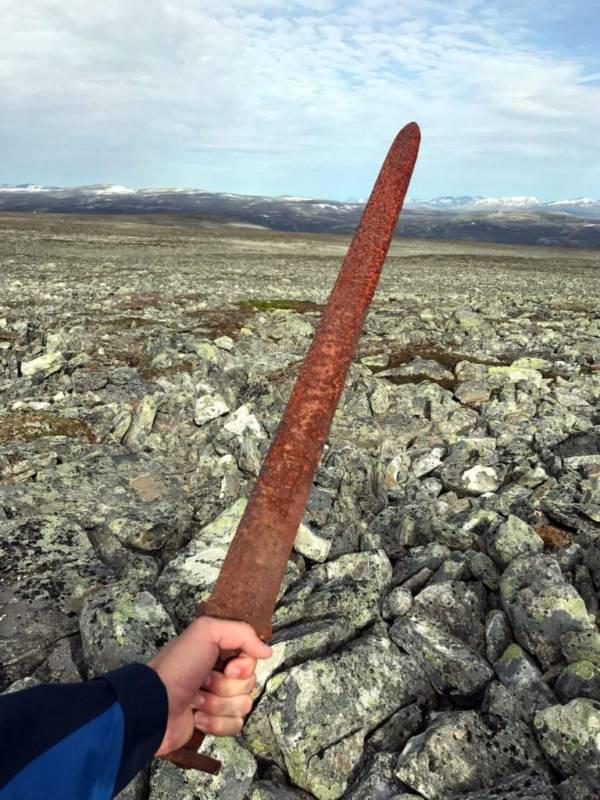In September 2017, a reindeer hunter in southern Norway made an extraordinary discovery high in the mountains of Oppland County: a 1,200-year-old Viking sword. This iron relic, dating back to 850-950 A.D., was wedged between rocks at an altitude of over 1,500 meters. What makes this discovery even more remarkable is the sword’s excellent preservation, largely thanks to the region’s receding permafrost, which has been unveiling ancient artifacts for several years.
Table of Contents
ToggleA Unique Find Amidst the Melting Permafrost
The sword, while slightly rusted, is in far better condition than many other objects from this period. It highlights not only the craftsmanship of Viking warriors but also the environmental conditions that have allowed it to survive over the centuries. As the permafrost melts due to climate change, new relics continue to emerge from beneath the ice and snow, offering unparalleled insights into the Viking era.

Although the sword’s leather handle and organic parts have deteriorated, the metal blade remains largely intact, offering clues to the advanced metallurgy of the Vikings. Archaeologists believe the sword may have been abandoned, possibly during a blizzard or while the owner was traveling across Norway’s rugged terrain.
Insights into Viking Culture and Survival
This discovery is part of a broader trend of ancient artifacts being uncovered due to the shifting climate. Similar finds, including arrowheads, tools, and textiles, have surfaced over the past few decades, shedding light on the daily lives of these seafaring people. The sword serves as a reminder of the hardships faced by the Vikings as they navigated harsh environments, often fighting battles on land and sea.

The craftsmanship of the sword speaks to the high level of skill possessed by Viking blacksmiths. Viking weapons were designed not only for utility but also to reflect the status and wealth of their owners. This particular find is unique in that it provides evidence of Viking travel and activity in Norway’s mountainous regions, where such objects are seldom found.
The Role of Climate Change in Uncovering History
As the climate crisis continues to impact the world, particularly in the Arctic and sub-Arctic regions, it has inadvertently led to the discovery of lost artifacts. With the melting of permafrost, items that were once frozen in time are now visible, giving archaeologists a rare opportunity to study them in detail. While this presents an opportunity to gain new insights, it also serves as a stark reminder of the broader environmental challenges facing the planet.

In addition to revealing Viking tools and weapons, researchers have found evidence of early settlements, hunting practices, and even remnants of Viking clothing. These finds are crucial for understanding the Vikings’ expansion, culture, and their remarkable ability to survive and thrive in some of Europe’s most unforgiving landscapes.
Conclusion: A Rare Window into Viking Life
The discovery of this 1,200-year-old sword is more than just an archaeological find; it is a connection to the past, revealing the Vikings’ tenacity and resourcefulness. As more artifacts emerge from beneath the melting ice, we gain a deeper understanding of a culture that shaped much of Europe’s early history. The Viking sword is a symbol of their legendary journeys and the legacy they left behind in the harsh landscapes of Scandinavia.
Through these finds, historians and archaeologists continue to piece together the story of the Vikings—crafting a richer, more detailed portrait of their world, one discovery at a time.

